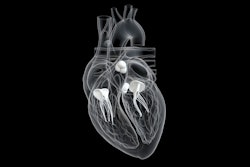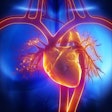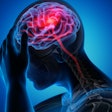AI can help identify patients who may benefit from preventive cardiology services via CT images, suggest findings presented July 20 at the Society of Cardiovascular Computed Tomography (SCCT) annual meeting in Washington, DC.
Researchers led by Yaron Aviv, MD, from the Rabin Medical Center in Tel Aviv, Israel, presented results from an ongoing study that shows AI's potential for predicting which patients could use preventive services based on low, moderate, and high coronary artery calcification.
“This ongoing study indicates routine coronary artery calcification quantification using AI software on chest CT scans can identify patients who may benefit from preventive cardiology services and lead them to appropriate cardiac treatment pathway,” Aviv and colleagues wrote.
Previous studies have explored AI’s promising use in automatically analyzing coronary artery calcification, a key biomarker in atherosclerosis, based on chest CT imaging.
Aviv and co-authors studied the impact of evaluating coronary artery calcification with AI on improving the allocation of add-on therapies and further evaluation. They used propriety AI software to estimate calcification from nongated, noncontrast chest CT scans.
The study had patients organized into three groups: low calcification, 0-99 Agatston unit (AU); moderate calcification, 100-399 AU; and high calcification, ≥ 400 AU. It did not include patients with prior myocardial infarction, percutaneous coronary intervention (PCI), coronary artery bypass graft (CABG), and a life expectancy of less than two years.
The team invited patients classified as having high calcification to a dedicated clinic to perform a risk factor and clinical assessment, begin taking appropriate medication, and undergo further testing as needed. It also informed referring physicians of the calcification status of patients with low to moderate coronary artery calcification, encouraging guideline-based preventive care.
The final analysis included 631 patients whose data was collected between 2023 and 2024. Of the total, 84 patients (13%) were classified as having high coronary artery calcification, 163 (26%) as moderate, and 348 (61%) as low. The researchers assigned appropriate low-density lipoprotein (LDL) goals and initiated statins or adjusted dosage where needed.
Finally, 20 patients with high calcification were referred to myocardial perfusion imaging, of which two were referred for invasive coronary angiography. One of these patients underwent PCI while the other was referred for CABG.
The study team called for further follow-up studies to assess the AI model’s clinical impact.



















